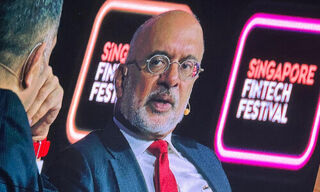Maybank to Double Non-Lending Retail SME Revenue Share
Maybank seeks diversification of its revenue through non-lending income contributions from its so-called «retail small and medium-sized enterprise» segment which it launched five years ago.
The bank plans to double the income stream from the retail SME (RSME) segment over the next three years, from 10 percent (as of December 2018) to 20 percent, after first launching the business to cover this client market five years ago.
The RSME segment is defined as small businesses with turnover of up to 20 million Singapore dollars ($14.4 million). This differs from the broader commercial banking business which covers companies with turnover between $14.4 million and $86.3 million.
«We are trying to move more into fee-based income as we realized there's always asset risk,» said Marc Leong, head of SME banking at Maybank in a «Business Times» report. «And SMEs need these services, so why not offer it to them instead of having competitors do it?»
Since launching five years ago, the RSME segment’s client pool has grown 60-70 percent and now has grown to include a dedicated 85-strong team to cover the segment. Leong also highlighted 100 percent growth in areas like treasury services and trade finance.
«It’s Okay to Walk Away»
Despite optimism about non-interest income, the bank notes that it wants to keep lending as a «core hook» for relationships but emphasizes prudent risk management.
«I always tell the guys, it's okay to walk away,» said Alvin Lee, head of community financial services Singapore and group wealth management, noting that Maybank’s non-performing loan ratio for its overall SME segment is «well below» the industry average of 5.1 percent.
«Sometimes, we actually do the customers or prospective customers a service by walking away.»
Digital Dreams
The bank is reportedly exploring the possibility of obtaining a digital bank license and Lee underlined a ready digital platform regardless of the outcome. Although the bank has made meaningful investments in digital capabilities, it notes that the market is diverse and large enough for different players to co-exist.
Lee said that digital banks are likely to target underserved small businesses while traditional banks would serve more established SMEs.
«As a firm, we think digital is important, but I don't think any digital bank will survive on its digital capability alone,» he added.



























